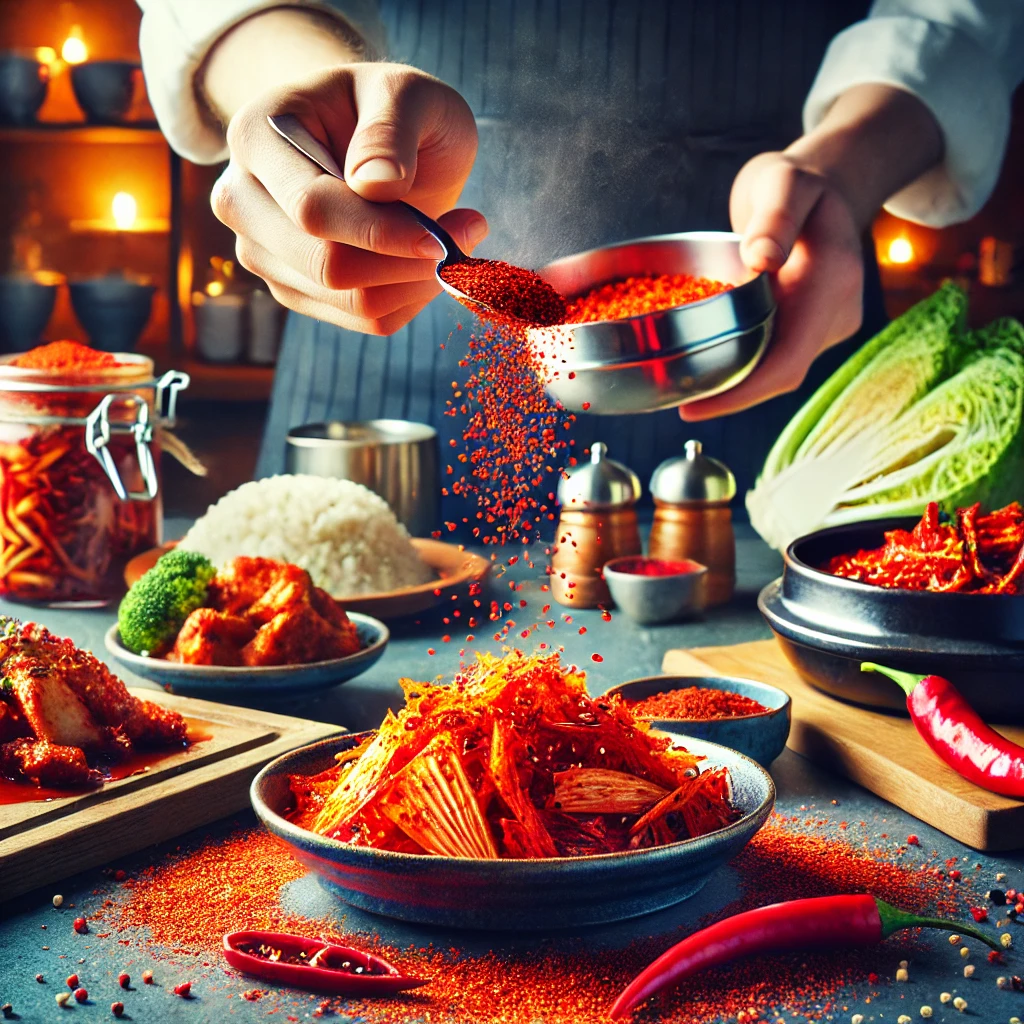Introduction to Piment Coréen Schoville
Korean cuisine is celebrated for its vibrancy and the distinct flavors it offers, largely contributed by a key ingredient: Piment Coréen Schoville, or Gochugaru. This culinary staple is not just a spice but a cultural symbol in Korean gastronomy. In this article, we will delve deep into the fiery world of Gochugaru, exploring its Scoville rating, its significance in Korean dishes, and how it’s used across global recipes.
What Is Korean Red Pepper (Piment Coréen Schoville)?
Gochugaru, or Korean red pepper flakes, is a hot, vibrant red spice made from dried chili peppers. It varies from fine to coarsely ground and is central to the flavor profiles in many Korean recipes. Unlike its other chili counterparts, Gochugaru has a unique heat profile accompanied by a slight sweetness and smoky flavor, making it irreplaceable in dishes like kimchi and tteokbokki.
Why Is Gochugaru Important?
The importance of Gochugaru in Korean cooking cannot be overstated. It provides not only the heat but also a depth of flavor that is essential to many traditional dishes. Its versatility makes it a pantry staple, from marinades to stews, where it imparts a warmth that is flavorful without being overpowering. Beyond its culinary uses, Gochugaru is a bridge to Korean culture, embodying the essence of Korea’s rich culinary history and tradition.
What Exactly Is the Scoville Scale?
The Scoville Range is a description of the pungency (spicy heat) of chili peppers—or other spicy ingredients, as recorded in Scoville Heat Products (SHU). It is a function of capsaicin concentration, the component responsible for the heat sensation. The scale ranges from zero, as in bell peppers, to over a million SHU for the fieriest varieties like the Carolina Reaper.
Piment Coreen Schoville (Gochugaru) on the Scoville Scale
Gochugaru places modestly on the Scoville Scale with a rating of 4,000–8,000 SHU, making it comparable to milder jalapeño peppers. This rating signifies that while it offers a significant warmth, it doesn’t overpower dishes but rather enhances them, allowing for culinary creativity and adaptability in various recipes.
Culinary Art: Korean Dishes Featuring Piment Coreen Schoville
In Korean cuisine, Gochugaru is used in numerous iconic dishes. Kimchi, the national dish of Korea, relies heavily on Gochugaru for its fiery red color and sharp taste. Other dishes like bulgogi, a marinated beef delicacy, and sundubu-jjigae, a soft tofu stew, also utilize Gochugaru for its depth of flavor and color, proving its indispensable role in Korean culinary arts.
Global Recipes Including Piment Coreen Schoville
Gochugaru has crossed borders, influencing global culinary scenes. It’s used in fusion dishes such as Korean-Mexican tacos, where its unique heat complements the richness of meats. Additionally, innovative chefs use it in various spice rubs and even in some dessert applications where a touch of heat is desired.
The Health Factor of Piment Coréen
Aside from its culinary uses, Gochugaru is also recognized for its health benefits. Rich in vitamins, antioxidants, and minerals, it promotes heart health and boosts metabolism. Its moderate heat level makes it suitable for many, providing the health benefits of capsaicin without the extreme heat that might deter some individuals.
How to Use Piment Coréen Schoville in Cooking
To utilize Gochugaru effectively, it should be added during the cooking process to allow its flavors to meld with the dish. It’s perfect in stews and sauces, where it can simmer and infuse the dish with its distinctive spicy-sweet flavor. For a more direct application, it can be used as a seasoning for meats before grilling or roasting.
1. Kimchi Making
- Gochugaru is essential in creating the famous Korean kimchi. The chili’s flakes are mixed with salted cabbage along with other ingredients like garlic, ginger, and fish sauce. The spice’s heat and smokiness enhance the fermentation process, resulting in a deeply flavorful and complex side dish.
2. Marinades and Rubs
- Create a spicy marinade or rub for meats and vegetables by combining Gochugaru with soy sauce, sesame oil, honey, and garlic. This mixture is perfect for barbecuing or roasting, giving a smoky and slightly sweet flavor profile that is uniquely Korean.
3. Soups and Stews
- Add Gochugaru to soups and stews to introduce warmth and depth. A popular dish where Gochugaru shines is in ‘budae jjigae’ (Korean army stew), where it complements the rich broth made with sausage, spam, tofu, and vegetables.
4. Vegetable Seasoning
- Sprinkle Gochugaru over sautéed vegetables or incorporate it into dressings for salads. It pairs wonderfully with briny or creamy elements, bringing a touch of heat that enhances the natural flavors of the vegetables.
5. Homemade Condiments
- Mix Gochugaru with mayonnaise or ketchup to create spicy condiments that can elevate sandwiches, burgers, or even seafood dishes like shrimp cocktails.
Conclusion
Gochugaru, or Piment Coréen Schoville, is more than just a spice. It’s a culinary phenomenon that bridges traditional Korean flavors with global cuisine, offering a unique combination of heat, sweetness, and smokiness. Its moderate Scoville rating allows it to be a versatile ingredient in many dishes, enhancing them with its distinct flavor without dominating the palate. As Korean cuisine continues to captivate food enthusiasts around the world, Gochugaru remains at the heart of its culinary innovation and tradition.


